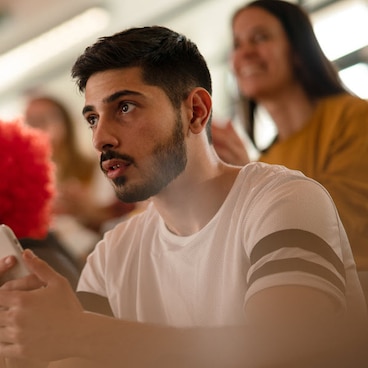
Understanding how money works is an important part of helping kids create successful futures, but it’s also something parents say is a challenge to figure out.
When Jennifer Van Himbergen, a member of Schwab’s Retirement Plan Services team, wanted her kids to understand money, she started with a chore board. The kids would earn money by completing and tracking tasks and would get paid at the end of each week—like a paycheck. And just like in the real world, they were also expected to budget their money for things they wanted like popcorn at the movie theater.
As they became teenagers, the things they wanted became more expensive and Jennifer knew she needed to build on their financial education. So, when her kids planned to purchase their first iPad, Jennifer made them comparison shop to find the best deal. And then when they wanted streaming services to watch their favorite shows, she made them split the cost so they could understand what a monthly payment felt like.
As Jennifer’s kids have become adults, she knows they’re facing more challenging financial tasks like paying for graduate school and finding and managing their own health insurance. But she feels confident they’ll be able to navigate these challenges due to the groundwork she laid.
Time for a reality check
Inspired by the success of her children, Jennifer decided to further her financial literacy efforts through the Reality Store, part of Schwab’s Money Matters program, which was created in partnership with and is facilitated through the Boys & Girls Club of America.
The Reality Store invites area teens to participate in an interactive experience where they learn how the choices they make regarding career, managing income and expenses, and saving and investing will affect future outcomes. In the simulation, the students select a career and get assigned a salary based on that career. Then, they go to different booths that represent different real-life experiences. There’s a booth where they have to pay their utility bills, a booth where they decide how much money to spend on entertainment, and a booth where they juggle one of life’s unexpected events by drawing a card of chance, to name a few.
Since there’s a tendency not to talk about money in American culture, many kids may have a limited view of finance, one that’s reflective only of the financial situation of their family. But through the Reality Store, they learn that their chosen career and how they spend and budget their money can have a big effect on their financial situation.
“It’s fascinating to watch these kids make decisions,” explains Jennifer, who has hosted students from the Akron and Cleveland Boys & Girls Clubs at Schwab’s Richfield, Ohio campus. “They don’t treat it like a game. They treat it like real money.”
Her favorite part is when they bring in pizza at the end and the kids talk about what they learned. Jennifer recalls one girl who said, “My grandmother always says we’re out of money and I kind of roll my eyes. But now I understand what she’s talking about.”
She recalls another student saying that they realized they were about to go into the real world not knowing anything about how it actually works. “We’re helping them understand what they will experience as adults and how to prepare for it,” explains Jennifer.
When it comes to learning vital money skills, the earlier the better
Recent research from Charles Schwab may indicate that financial literacy efforts are paying off and that there’s increased optimism among youth. The study found that:
- 69% of young adults believe their parents are good financial role models
- 76% believe they will have a better financial future than their parents
However, there’s more work to do. Another study by Motley Fool found that:
- 34% of parents know their kids aren’t being offered a personal finance class
- 25% don’t talk to their kids more about investing because they don’t think they have enough knowledge to do so
So, what’s the solution? It may be as simple as giving kids a dose of reality.


